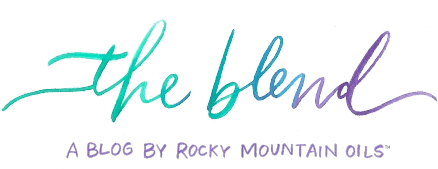What Is Hydrosol: All About Hydrosols
You’ve probably heard the term `hydrosol’ mentioned more and more lately in the essential oil and aromatherapy world. Hydrosols have definitely become much more popular within the last 5 years, so it's about time we learn a little more about them.
What is hydrosol, precisely?
The definition of a hydrosol is a colloidal suspension in water. In simpler terms, a hydrosol is an aromatic water with therapeutic properties. Some other names for a hydrosol are flower water, floral water, distillate, and hydrolat. Common hydrosols are a byproduct of steam distilled flowers, leaves, and fruits; they are technically just the water that is left over from the steam or hydro-distillation of an essential oil. Don’t let the name “floral water” fool you! Hydrosols are more than just essential oils mixed in water. Did you know that it is common for some companies to market essential oils in water as hydrosols? Because of this, it is very important to purchase from a trusted source that can provide details about the product. Some of the most recognized hydrosols in the industry would be Rose Hydrosol, Lavender Hydrosol, Chamomile Hydrosol, Peppermint Hydrosol, and Witch Hazel Hydrosol.
How hydrosols are made:

There are numerous methods for obtaining the essence or essential oil from a plant, and one of the most prevalent and efficient techniques that yields hydrosols is steam distillation. Steam distillation involves using water vapor to heat various parts of the plant, such as the roots, leaves, stems, flowers, or bark, thus generating their own steam. Now, you may wonder, 'What is hydrosol?
That steam then condenses into a liquid, and the essences of the plants are separated from the water. The most concentrated part of that separation is what we call ‘essential oils’. What is left over after the separation is the aromatic water or hydrosol. Hydrosols are mostly water, containing only 1-2% of the same chemical constituents found in the volatile essential oil. However, hydrosols also contain the nonvolatile organic components that come from the plant that was distilled.
As part of the distillation process, it is also important to learn and support farms that properly use all parts of each precious plant. Many companies choose to cut corners by discarding what is thought to be unusable. While this may seem logical, such practices can decrease sustainability and waste control, which can ultimately weaken our planet's ecosystem.
Because hydrosols are not a sterile product, they are notorious for growing bacteria or becoming contaminated. They can also degrade over time, so you should always refrigerate hydrosols to maintain their freshness, just like milk or juice.
Differences between hydrosols and essential oils:
Did you know that because hydrosols are so chemically different from essential oils, they aren't actually a part of routine essential oil studies?
- Hydrosols contain the water-soluble parts of the plant, whereas essential oils are made up of the fat-soluble constituents.
- Most hydrosols have a shelf life of 8 - 18 months, whereas most essential oils have a shelf life of 3 - 8 years.
- Hydrosols can grow bacteria naturally, whereas essential oils are generally incapable of growing bacteria without direct contamination.
Common uses for Hydrosols:
You can use hydrosols for many things, including DIY cleaning products, natural skin care, and aromatherapy practices. They are most commonly combined with essential oils and used as a base or to replace water in linen sprays, facial toners, and natural body or room sprays. You can also use hydrosols as a base for fragrances or even facial cleansers. Hydrosols are definitely an up-and-coming product that everyone should keep their eye on. When made properly with pure ingredients and sustainable practices, hydrosols can be an excellent and desirable tool to add to your cleaning, skin care, and aromatherapy purposes. And hey! Who wouldn’t want to wake up and smell the Rose Water!

